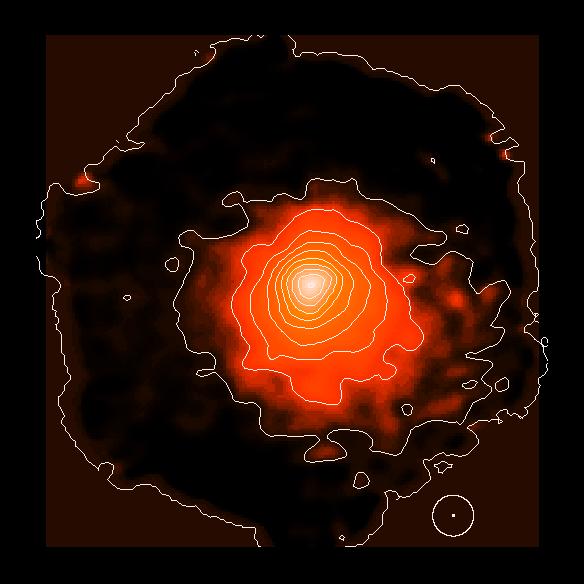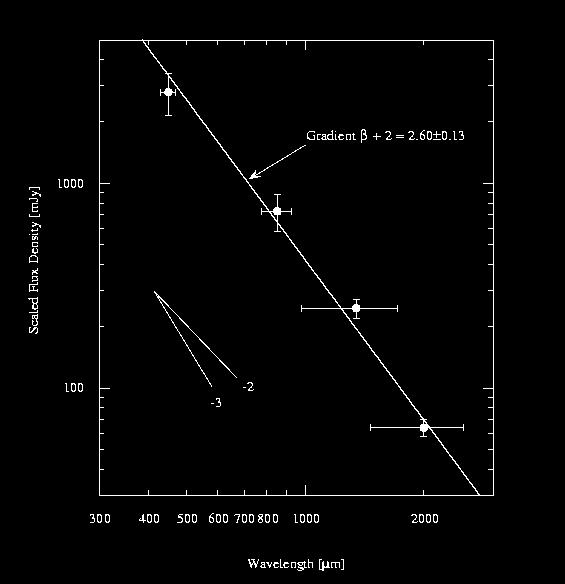

|
Solid Debris from Comet Hale-Bopp
David
Jewitt
Astronomical Journal, 1999, 117, 1056-1062.
|
|---|
Abstract
Large particles may be present in comets in numbers sufficient to dominate the
total mass of the coma. These large particles are not readily sensed by
conventional (optical - infrared) techniques but are prominent at submillimeter
wavelengths. Images taken using a new camera sensitive to submillimeter
wavelengths reveal that comet Hale-Bopp was a prodigious source of particulate
matter, releasing dust at 2000 tonnes/s when near perihelion and contributing
3x10**13 kg to the interplanetary dust complex. The dust production rate
exceeded that of gas (mostly water) by a factor > 5.
In a Nutshell
This paper summarizes an exhaustive (and exhausting) program
of measurements of Hale-Bopp using the revolutionary new
submillimeter bolometer array camera SCUBA. This comet was
really dusty, with more mass released in macroscopic debris than
in gas. The properties of the debris provide a clue about the
physics of accretion in the protosolar disk, since comets
are products of accretion in that disk.

|

|
Last Update March 2000